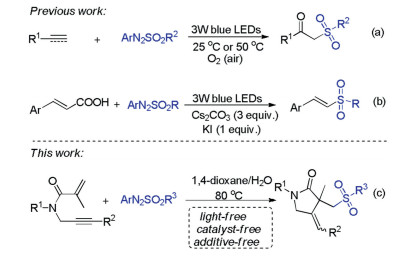
Citation:
Kun Zou, Jun Zhi Wang, Jun Wu, Yuan Zhou, Chuang Liu, Fei Jun Dan, Ya Xiong Zhang, Jin Yang. Furostanol saponins with inhibitory action against COX-2 production from Tupistra chinensis rhizomes[J]. Chinese Chemical Letters,
;2007, 18(10): 1239-1242.
doi:
10.1016/j.cclet.2007.06.018

-
Two furostanol saponins were obtained from the n-butanol fraction of methanol extract from Tupistra chinensis rhizomes, a folk medicine of Shennongjia Forest District of Hubei Province. Their structures were determined as (25S)-26-O-(β-D-glucopyranosyl)-furost-1β, 3β, 22α, 26-tetrol-3-O-β-D-glucopyranosyl-(1→4)-β-D-glucopyranosyl-(1→2)-β-D-glucopyranoside (1) and (25R)-26-O-(β-D-glucopyranosyl)-furost-lβ, 3β 22α, 26-tetrol 3-O-β-D-glucopyranosyl-(1→4)-β-D-glucopyranosyl-(1→2)-β-D-glucopyranoside (2), on basis of chemical and spectroscopic evidences. 1 and 2 displayed marked inhibitory action towards COX-2 production in macrophages of the rat abdomen induced by LPS at 20 μg/mL.
-
Keywords:
- Tupistra chinensis Bak.,
- Furostanol saponin,
- COX-2,
- Folk medicines
-
Sulfone-containing compounds are frequently found in pharmacologically active compounds, natural products, and materials [1]. Furthermore, they can also be employed as important intermediates in various organic transformations to access a series of useful molecules [2]. Consequently, the introduction of sulfone functionality into organic framework has attracted considerable synthetic pursuit of chemists because of their interesting biological activities and versatile synthetic applications [3]. During the past decades, a number of sulfonylating agents such as sulfonyl chlorides [4], sulfonyl hydrazides [5], sulfinates [6], sulfinic acids [7], thiophenols [8], sulfonyl cyanides [9], sulfonyl selenides [10] and SO2 surrogates [11] have been developed for the construction of organic sulfones. Nevertheless, most of these sulfonylation reactions usually require the use of catalysts or a stoichiometric amount of oxidants, or suffer from complex reaction conditions. It is still highly desirable to develop new strategies to construct sulfone-containing compounds from simple sulfonylating agents under mild conditions.
Arylazo sulfones are colored and bench stable compounds, which could generate aryl radical and sulfonyl radical along with the release of N2 through the homolytic cleavage of C-N and S-N bonds under visible-light irradiation or heating conditions [12]. Generally, arylazo sulfones are utilized as arylating reagents in photoinduced reactions in the absence of photocatalyst [13]. Recently, arylazo sulfones have alternatively emerged as sulfonylating agents for constructing sulfone-containing compounds [14]. In 2019, our group reported oxysulfonylation of alkenes or alkynes with arylazo sulfones and dioxygen leading to β-oxo sulfones under visible-light irradiation conditions (Scheme 1a) [14a, b]. In 2020, Yadav and co-workers also described an efficient visible-light mediated decarboxylative sulfonylation of cinnamic acids and arylazo sulfones for the synthesis of (E)-vinyl sulfones (Scheme 1b) [14c]. As our ongoing interest in sulfonylation reactions [15], herein, we wish to present a catalyst- and light-free selective sulfonylation/cyclization of 1,6-enynes with arylazo sulfones to synthesize sulfonated γ-butyrolactams under simple heating conditions (Scheme 1c).
Scheme 1
The cyclization of 1, n-enynes has become as a powerful protocol for the construction of various important heterocycles such as quinolines, pyrroles, pyridines, furans, indoles and pyrans in terms of its step-economy and high reaction efficiency [16-18]. γ-Butyrolactam is the core structure of a large number of natural and biologically active compounds, which covered a wide spectrum of biological activities [19]. Recently, some functionalized γ-butyrolactams have been elegantly synthesized through the radical 1,6-enyne cyclization strategies under light or strong oxidant mediated conditions [20]. The present reaction, which simply utilizes arylazo sulfones as sulfonylating agents, offers a convenient and regioselective approach to access various sulfonylated γ-butyrolactams under mild and catalyst-free conditions.
At the beginning of the experiment, the model reaction of N-phenyl-N-(prop-2-yn-1-yl)methacrylamide (1a) with 4-methoxyphenylazo mesylate (2a) was chosen to test the optimized reaction conditions. The product 3a was only isolated in 6% yield when the model reaction was conducted in 1, 4-dioxane at 80 ℃ (Table 1, entry 1). To our delight, the yield of 3a was largely increased when water was added in this reaction system (Table 1, entries 2–6). The highest yield of 3a (70%) was obtained when the ratio of 1, 4-dioxane and water was 2:1 (Table 1, entry 6). The yield would be slightly decreased if we continued to increase the amount of water (Table 1, entry 7). Next, various mixed solvents with organic solvent and water (2/1) were investigated (Table 1, entries 8–15). Generally, low to moderate yields were observed when the reaction was carried out in the mixture of EtOH, DME, THF, DMF, DMSO, or DCE with H2O (2/1). Only a trace amount of product 3a was detected when the reaction was performed in CH2Cl2/H2O (2/1). None of the product was observed in CH3CN/H2O (Table 1, entry 15). The decrease of reaction temperature would lead to lower reaction efficiency. No transformation was observed when the reaction was conducted at room temperature (Table 1, entry 17). The reaction was not improved when the reaction temperature was increased to 90 ℃ (Table 1, entry 18). Furthermore, product 3a was still obtained in good yield when the reaction was carried out under nitrogen atmosphere (Table 1, entry 19). Moreover, the use of other arylazo mesylates (4-methylphenylazo mesylate, 4-fluorophenylazo mesylate or 4-chlorophenylazo mesylate) to replace 4-methoxyphenylazo mesylate also gave the desired product 3a, but lower reaction efficiency was observed (Table 1, entries 20–22). Moreover, when the reaction was carried out under irradiation with 3 W Blue LED lamps, the corresponding product 3a was obtained in 22% yield (Table 1, entry 23).
Table 1
Under the optimized conditions, the scope and limitation of various 1,6-enyne derivatives and arylazo sulfones were further examined (Scheme 2). Generally, a series of 1,6-enynes with both electron-donating and electron-withdrawing groups on the N-aromatic ring could undergo the reaction efficiently to produce the desired products (3b-3l) in moderate to good yields. Notably, halogen substituents such as F, Cl and Br groups were all tolerated in this reaction system, which could be used for the further modification via coupling reactions. It was found that the reaction efficiency was greatly affected by the steric hindrance of substituent on the aromatic ring, and only a trace amount of product 3e was detected when ortho-methyl N-aromatic ring substrate was employed in this system. Unfortunately, when N-alkyl substituted 1,6-enyne such as N-benzyl-N-(prop-2-ynyl) methacrylamide was tested in the present reaction, none of the desired product 3n was detected. It should be noted that internal alkyne such as N-(but-2-yn-1-yl)-N-phenylmethacrylamide was suitable for this reaction, affording the product 3m in moderate yield. Then, the scope of different arylazo sulfones was investigated. Arylazo alkylsulfone (i.e., 4-methoxyphenylazo ethyl sulfone) could also be utilized in this system to afford the corresponding product 3o in 68% yield. Moreover, a variety of arylazo arylsulfones bearing an electron-donating (methyl and methoxy) or an electron-withdrawing group (fluoro, chloro, bromo and trifluoromethyl) on the aryl rings were suitable substrates, and the corresponding products (3r-3x) were obtained in moderate to good yields.
Scheme 2
To investigate the possible reaction mechanism, two control experiments were carried out. When radical scavenger TEMPO (2, 2, 6, 6-tetramethyl-1-piperidinyloxy) was added in the model reaction system, the transformation was extremely inhibited and aryl-TEMPO adduct was observed by LC–MS. This result suggested that a radical process might be involved in the present reaction (Scheme 3a). Furthermore, the cyclization product 1a' was not generated from 1a under standard conditions in the absence of 4-methoxyphenylazo mesylate (2a) (Scheme 3b), suggesting that this cascade cyclization was triggered by in situ generated sulfonyl radical.
Scheme 3
Based on the above experimental results and previous reports [4, 7, 8, 13, 14], a possible reaction pathway was proposed as demonstrated in Scheme 4. Initially, the homolysis of N–S bond of arylazo sulfone 2 generated sulfonyl radical 4 and aryl radical along with the release of N2 under heating conditions. Subsequently, the selective addition of sulfonyl radical 4 to C=C bond gave alkyl radical 5, which further underwent the intramolecular cyclization with the C-C triple bond to give the vinyl radical 6. Finally, the abstraction of a hydrogen from the solvent would produce the desired product 3.
Scheme 4
In summary, a convenient and efficient method has been developed for the construction of sulfonylated γ-butyrolactams through the regioselective sulfonylation/cyclization of 1,6-enynes with arylazo sulfones. The present transformation could be achieved under catalyst- and additive-free conditions via the sequential formation of C-S and C-C bonds. This protocol simply utilizes arylazo sulfones as sulfonylating agents offering a highly attractive routine to synthesize sulfonylated γ-butyrolactams, which is expected to exhibit potential application in synthetic chemistry.
Declaration of competing interest
The authors report no declarations of interest.
Acknowledgments
This work was supported by the International Cooperation Project of Qinghai Province (No. 2018-HZ-806), the Youth Innovation and Technology Project of Higher School in Shandong Province (No. 2019KJC021), the Natural Science Foundation of Shandong Province (No. ZR2018MB009), the Qinghai Key Laboratory of Tibetan Medicine Research (No. 2017- ZJ-Y11) and CAS "Light of West China" Program 2018, and Entrepreneurship Training Program for College Students (No. 201910049).
Appendix A. Supplementary data
Supplementary material related tothis article can be found, in the online version, at doi:https://doi.org/10.1016/j.cclet.2020.11.059.
* Corresponding author at: School of Chemistry and Chemical Engineering, Qufu Normal University, Qufu 273165, China.
** Corresponding author.
E-mail addresses: xhzhao@nwipb.cas.cn (X. Zhao), weiweiqfnu@163.com (W. Wei).
-

-
-
[1]
Huijiao Fu , Peiqin Liang , Qianwen Chen , Yan Wang , Guang Li , Xuzi Cai , Shengtao Wang , Kun Chen , Shengying Shi , Zhiqiang Yu , Xuefeng Wang . COX-2 blocking therapy in cisplatin chemosensitization of ovarian cancer: An allicin-based nanomedicine approach. Chinese Chemical Letters, 2024, 35(8): 109241-. doi: 10.1016/j.cclet.2023.109241
-
[2]
Linzhou Yin , Xiaowen Jiang , Miao Wang , Yiren Yang , Zhonggui He , Jin Sun , Huiyuan Gao , Mengchi Sun . Phytoconstituent-derived nano-medicines/vesicles providing a promising dawn for inflammatory bowel disease. Chinese Chemical Letters, 2025, 36(6): 110224-. doi: 10.1016/j.cclet.2024.110224
-
[3]
Haojie Duan , Hejingying Niu , Lina Gan , Xiaodi Duan , Shuo Shi , Li Li . Reinterpret the heterogeneous reaction of α-Fe2O3 and NO2 with 2D-COS: The role of SDS, UV and SO2. Chinese Chemical Letters, 2024, 35(6): 109038-. doi: 10.1016/j.cclet.2023.109038
-
[4]
Renshu Huang , Jinli Chen , Xingfa Chen , Tianqi Yu , Huyi Yu , Kaien Li , Bin Li , Shibin Yin . Synergized oxygen vacancies with Mn2O3@CeO2 heterojunction as high current density catalysts for Li–O2 batteries. Chinese Journal of Structural Chemistry, 2023, 42(11): 100171-100171. doi: 10.1016/j.cjsc.2023.100171
-
[5]
Shengwen Guan , Zhaotong Wei , Ningxu Han , Yude Wei , Bin Xu , Ming Wang , Junjuan Shi . Construction of metallo-complexes with 2,2′:6′,2″-terpyridine substituted triphenylamine in different modified positions and their photophysical properties. Chinese Chemical Letters, 2024, 35(7): 109348-. doi: 10.1016/j.cclet.2023.109348
-
[6]
Maomao Liu , Guizeng Liang , Ningce Zhang , Tao Li , Lipeng Diao , Ping Lu , Xiaoliang Zhao , Daohao Li , Dongjiang Yang . Electron-rich Ni2+ in Ni3S2 boosting electrocatalytic CO2 reduction to formate and syngas. Chinese Journal of Structural Chemistry, 2024, 43(8): 100359-100359. doi: 10.1016/j.cjsc.2024.100359
-
[7]
Yongheng Ren , Yang Chen , Hongwei Chen , Lu Zhang , Jiangfeng Yang , Qi Shi , Lin-Bing Sun , Jinping Li , Libo Li . Electrostatically driven kinetic Inverse CO2/C2H2 separation in LTA-type zeolites. Chinese Journal of Structural Chemistry, 2024, 43(10): 100394-100394. doi: 10.1016/j.cjsc.2024.100394
-
[8]
Huirong Chen , Yingzhi He , Yan Han , Jianbo Hu , Jiantang Li , Yunjia Jiang , Basem Keshta , Lingyao Wang , Yuanbin Zhang . A new SIFSIX anion pillared cage MOF with crs topological structure for efficient C2H2/CO2 separation. Chinese Journal of Structural Chemistry, 2025, 44(2): 100508-100508. doi: 10.1016/j.cjsc.2024.100508
-
[9]
Cailiang Yue , Nan Sun , Yixing Qiu , Linlin Zhu , Zhiling Du , Fuqiang Liu . A direct Z-scheme 0D α-Fe2O3/TiO2 heterojunction for enhanced photo-Fenton activity with low H2O2 consumption. Chinese Chemical Letters, 2024, 35(12): 109698-. doi: 10.1016/j.cclet.2024.109698
-
[10]
Liyong Ding , Zhenhua Pan , Qian Wang . 2D photocatalysts for hydrogen peroxide synthesis. Chinese Chemical Letters, 2024, 35(12): 110125-. doi: 10.1016/j.cclet.2024.110125
-
[11]
Wenlong LI , Xinyu JIA , Jie LING , Mengdan MA , Anning ZHOU . Photothermal catalytic CO2 hydrogenation over a Mg-doped In2O3-x catalyst. Chinese Journal of Inorganic Chemistry, 2024, 40(5): 919-929. doi: 10.11862/CJIC.20230421
-
[12]
Xiangyuan Zhao , Jinjin Wang , Jinzhao Kang , Xiaomei Wang , Hong Yu , Cheng-Feng Du . Ni nanoparticles anchoring on vacuum treated Mo2TiC2Tx MXene for enhanced hydrogen evolution activity. Chinese Journal of Structural Chemistry, 2023, 42(10): 100159-100159. doi: 10.1016/j.cjsc.2023.100159
-
[13]
Zizhuo Liang , Fuming Du , Ning Zhao , Xiangxin Guo . Revealing the reason for the unsuccessful fabrication of Li3Zr2Si2PO12 by solid state reaction. Chinese Journal of Structural Chemistry, 2023, 42(11): 100108-100108. doi: 10.1016/j.cjsc.2023.100108
-
[14]
Anqiu LIU , Long LIN , Dezhi ZHANG , Junyu LEI , Kefeng WANG , Wei ZHANG , Junpeng ZHUANG , Haijun HAO . Synthesis, structures, and catalytic activity of aluminum and zinc complexes chelated by 2-((2,6-dimethylphenyl)amino)ethanolate. Chinese Journal of Inorganic Chemistry, 2024, 40(4): 791-798. doi: 10.11862/CJIC.20230424
-
[15]
Yubang Li , Xixi Hu , Daiqian Xie . The microscopic formation mechanism of O + H2 products from photodissociation of H2O. Chinese Journal of Structural Chemistry, 2024, 43(5): 100274-100274. doi: 10.1016/j.cjsc.2024.100274
-
[16]
Yinglian LI , Chengcheng ZHANG , Xinyu ZHANG , Xinyi WANG . Spin crossover in [Co(pytpy)2]2+ complexes modified by organosulfonate anions. Chinese Journal of Inorganic Chemistry, 2024, 40(6): 1162-1172. doi: 10.11862/CJIC.20240087
-
[17]
Yang Liu , Yan Liu , Kaiyin Yang , Zhiruo Zhang , Wenbo Zhang , Bingyou Yang , Hua Li , Lixia Chen . A selective HK2 degrader suppresses SW480 cancer cell growth by degrading HK2. Chinese Chemical Letters, 2024, 35(8): 109264-. doi: 10.1016/j.cclet.2023.109264
-
[18]
Xin Li , Wanting Fu , Ruiqing Guan , Yue Yuan , Qinmei Zhong , Gang Yao , Sheng-Tao Yang , Liandong Jing , Song Bai . Nucleophiles promotes the decomposition of electrophilic functional groups of tetracycline in ZVI/H2O2 system: Efficiency and mechanism. Chinese Chemical Letters, 2024, 35(10): 109625-. doi: 10.1016/j.cclet.2024.109625
-
[19]
Kangmin Wang , Liqiu Wan , Jingyu Wang , Chunlin Zhou , Ke Yang , Liang Zhou , Bijin Li . Multifunctional 2-(2′-hydroxyphenyl)benzoxazoles: Ready synthesis, mechanochromism, fluorescence imaging, and OLEDs. Chinese Chemical Letters, 2024, 35(10): 109554-. doi: 10.1016/j.cclet.2024.109554
-
[20]
Yunkang Tong , Haiqiao Huang , Haolan Li , Mingle Li , Wen Sun , Jianjun Du , Jiangli Fan , Lei Wang , Bin Liu , Xiaoqiang Chen , Xiaojun Peng . Cooperative bond scission by HRP/H2O2 for targeted prodrug activation. Chinese Chemical Letters, 2024, 35(12): 109663-. doi: 10.1016/j.cclet.2024.109663
-
[1]
Metrics
- PDF Downloads(0)
- Abstract views(765)
- HTML views(9)

 Login In
Login In




 DownLoad:
DownLoad:
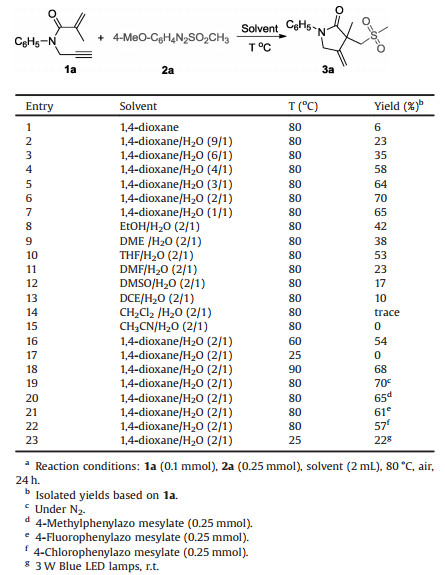
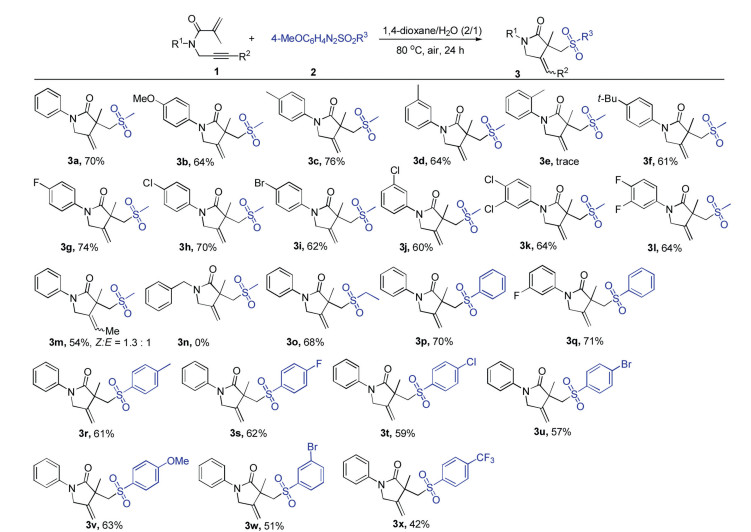
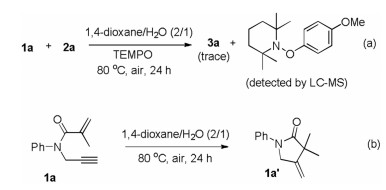
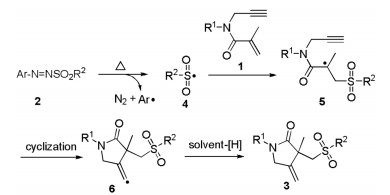
 DownLoad:
DownLoad: